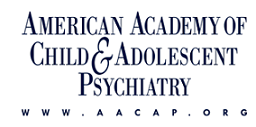Specialty Designation
Fellowship
Specialty Description
Child and adolescent psychiatry is a medical specialty focused on the prevention, diagnosis, and treatment of disorders of thinking, feeling, and behavior affecting children, adolescents, and their families (1).
Pursuing more training
50
In same state as program
77
In NHSC or similar underserved area
3
Non-medical career/left country
8
Number of accredited programs
152
Length of accredited training
Minimum number of prior years required
Offers graduate year 1 positions, available immediately upon medical school completion
No
Average number of PY1 interviews
22.10
Percent of programs requiring Step 1 score for interview
94.00
Percent of programs requiring Level 1 score (for DOs) for interview
83.50
Total number of active residents/fellows
Average number of residents/fellows
5.90
Average percent female
58.10
Average percent international medical graduates
26.80
Average percent DOs
21.10
Average number of full-time physician faculty
10.80
Average number of part-time physician faculty
1.70
Average percent female full-time physician faculty
55.20
Average ratio of full-time physician faculty to resident/fellow
2.00
Average hours on duty per week
45.70
Average maximum consecutive hours on duty
14.90
Average days off duty per week
1.80
Average percent of training in hospital outpatient clinics
27.80
Average percent of training in non-hospital ambulatory care community settings
20.10
Average number of days of vacation
19.10
Average resident/fellow compensation
Specialty Overview
What does a child and adolescent psychiatrist do?
Child and adolescent psychiatry is a medical subspecialty that involves working with children, adolescents and their families with emotional and behavioral illnesses.
Child and adolescent psychiatry:
Uses a knowledge of neurological, biological, psychological and social factors to treat patients
Offers a stimulating and rapidly evolving field
Provides opportunities for prevention and early intervention to improve quality of life
Child and adolescent psychiatrists spend meaningful time with patients, have the ability to make a major difference in children’s lives and:
Combine art and science to treat their patients' emotional, behavioral and psychical illnesses
Establish long-term relationships with patients and their family members
Fulfill the tremendous need for more child and adolescent psychiatrists
The field offers diverse and flexible practice options with outstanding job opportunities and remuneration including:
Private practice in solo or group settings
Research and teaching
Consultation to schools, hospitals, courts or other agencies
Advocacy for child mental health and public policy
The field offers flexibility of work hours with a lifestyle that can be tailored to career as well as family, such as:
Opportunities for part-time work
Excellent job-family balance
Top number of job offers per resident on graduation
Highly competitive salaries
Worldwide geographic opportunities
Sources
- Accreditation Council for Graduate Medical Education (ACGME)
Related Training
Child and Adolescent Psychiatry Subspecialty/Fellowship Training
To become a child and adolescent psychiatrist, residents complete three or four years of general psychiatry residency training (including internship), plus two years of child and adolescent psychiatry training. For integrated programs, Residents complete five years of training in general psychiatry and child and adolescent psychiatry at the same time.
Training programs are also available for those interested in both pediatrics and child and adolescent psychiatry.
Association

American Academy of Child and Adolescent Psychiatry
aacap.org
3615 Wisconsin Ave NW
Washington, DC 20016
(202) 966-7300
Email: [email protected]
